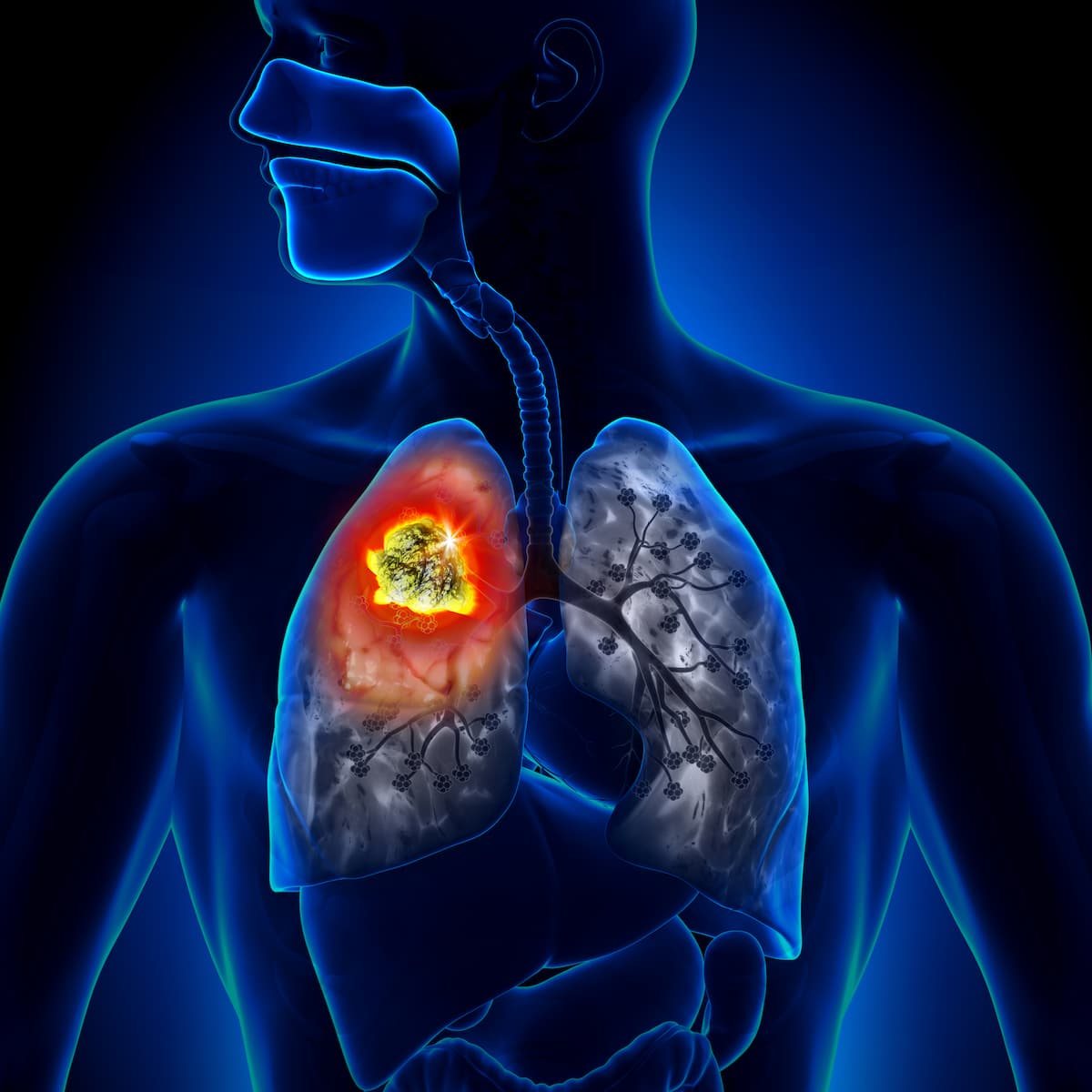NCCN Guidelines Add LEMS Antibody Testing for SCLC
Symptom specificity is now included in updated guidelines for SCLC relating to LEMS, characterized by proximal muscle weakness and autonomic dysfunction.
Approximately 50% of LEMS cases are associated with underlying malignancies, with findings suggesting LEMS may be observed in 3% of patients with SCLC.

The updated NCCN Clinical Practice Guidelines in Oncology for small cell lung cancer (SCLC) now include testing for Lambert-Eaton myasthenic syndrome (LEMS) as well as amifampridine (Firdapse) and tests for P/Q- and N-type voltage-gated calcium channel (VGCC) antibodies, according to a news release from Catalyst Pharmaceuticals.1
Symptom specificity is now included in the updated guidelines for SCLC relating to LEMS, characterized by proximal muscle weakness and autonomic dysfunction.2 The guidelines further suggest neurologic workups may include tests for PQ- and N-type VGCC antibodies, preferably in consultation with neurology. Under “Principles of Supportive Care,” the guidelines suggest amifampridine as a treatment in consultation with neurology.
The guidelines further recommend considering early subspecialty consultation for most recent management, given the association of neurologic syndromes such as LEMS with SCLC. Additionally, approximately 50% of LEMS cases are associated with underlying malignancies, with findings suggesting LEMS may be observed in 3% of patients with SCLC. According to an internal health care database analysis cited by the developers, as many as 90% of patients with LEMS who had an SCLC malignancy went undiagnosed.
“Early diagnosis of LEMS in SCLC is critical, as it may enable patients to [achieve] better outcomes if their LEMS symptoms are effectively treated while fighting SCLC. Accurate identification through VGCC antibody testing and comprehensive neurological evaluation is essential,” William Andrews, MD, FACP, chief medical officer at Catalyst Pharmaceuticals, said in the news release.1 “The NCCN Guidelines are a trusted standard for guiding treatment decisions, and we believe this update will drive greater awareness. Ultimately, it will help patients, caregivers, and health care providers make more informed choices when addressing this serious unmet need.”
According to findings from a study published in StatPearls, a diagnosis of LEMS can precede an SCLC diagnosis by 5 to 6 years.3 Predominant clinical features can include proximal muscle weakness, autonomic dysfunction, and impaired deep tendon reflexes, with a more rapid onset and progression in patients with SCLC-associated LEMS. According to the study authors, clinical features associated with areflexia and autonomic dysfunction should prompt an evaluation for LEMS.
Furthermore, the serology of the condition shows that anti–P/Q-type VGCC antibodies are present in 85% to 95% of patients with LEMS. However, these antibodies are linked to other neurological conditions and autoimmune disorders. Additionally, N-type VGCC antibodies are less frequently seen in approximately 30% to 40% of cases.
Study investigators recommended treating the underlying malignancy as well as managing LEMS-associated symptoms, with the most theoretically sound interventions focusing on improving acetylcholine (ACh) release. In addition to amifampridine, which blocks presynaptic potassium channels and prolongs the duration of action potential, the study authors suggested the potential use of acetylcholinesterase inhibitors, guanidine, intravenous immunoglobulin, immunosuppressive agents, rituximab (Rituxan), and plasma exchange in refractory cases.
LEMS-related symptoms can include weakness-related complications such as falls, fractures, and aspiration pneumonia as well as autonomic complications such as dry mouth, constipation, dysphagia, and erectile dysfunction. Treatment-related adverse effects of interest may include tingling and numbness associated with amifampridine. Furthermore, cytopenia and infections may develop due to immunosuppressive drug use.
The study authors concluded by highlighting a need for interprofessional collaboration in diagnosing and managing LEMS while emphasizing the need to elevate ACh levels to manage symptoms.
“The prognosis for [patients] with this syndrome is contingent on the primary malignancy. In cases of advanced disease, the prognosis tends to be bleak,” Apoorva Jayarangaiah, MD, assistant professor of medicine in the Division of Hematology/Oncology at Loma Linda University, wrote in the publication with study coinvestigators.3 “However, if the primary malignancy is controlled, symptomatic improvement gradually occurs. However, symptomatic improvement typically occurs gradually with control of the primary malignancy. Nevertheless, it is noteworthy that complete recovery is often unattainable.”
References
- Lambert Eaton myasthenic syndrome (LEMS) antibody testing and treatment recommendations added to NCCN Clinical Practice Guidelines for small cell lung cancer (SCLC). News release. Catalyst Pharmaceuticals. August 6, 2025. Accessed August 7, 2025. https://tinyurl.com/3dn49whz
- NCCN. Clinical Practice Guidelines in Oncology. Small cell lung cancer, version 1.2026. Accessed August 7, 2025. https://tinyurl.com/yfxv8b5b
- Jayarangaiah A, Lui F, Kariyanna PT. Lambert-Eaton myasthenic syndrome. In: StatPearls. StatPearls Publishing; 2023-. Updated October 23, 2023. Accessed August 7, 2025. https://tinyurl.com/yc3abwbj